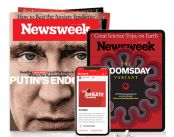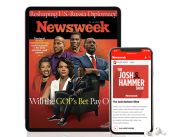Understanding Marketing Mix: A Structure for Success
Establishing a marketing mix for your brand starts with the four P's.

"Marketing mix" is a term that describes the varying elements that play a vital role in the planning of the marketing of a product or service. Traditionally known as the "Four P's" — product, price, promotion and place. It is a classification system that is needed to market a product or service properly and efficiently in order to accrue the best results. Hence the "mix," because it allows marketing managers and teams to focus on all areas of branding and continue to improve on existing products and processes. Marketing mix is the most crucial tool marketing teams use as it allows them to effectively position their product or service to the market they are trying to reach.
The concept of marketing mix was introduced in the 1960s by E. Jerome McCarthy, an author and professor of marketing. The system was built as the Four P's in order to organize how the marketing mix works. The Four P's are as follows:
Product: This is the product, item or service being sold. This encompasses many aspects such as design, features and quality of the product.
Price: The total sum of money that the customer needs to pay to buy the service or product. This also includes features such as discounts, payment terms and options for financing.
Promotion: All of the marketing strategies that will be used to relay the benefits of using the product or service to potential customers. Marketing tactics such as advertising, public retaliation, sales promotion and many more avenues are a part of the promotion segment.
Place: The place where the product or service will be sold. This consists of the physical location of the brick-and-mortar building, website, distribution channels and any delivery options.
Product
The first step in analyzing the marketing mix of a product is to determine an object or service that meets a customer's needs and wants. The product must be special for customers. Most customers purchase products because they have a problem that needs to be solved. The product should provide the solution to the problem. Other questions to consider when evaluating the product or service is to ask if the product is unique and if it rises above its competitors. Product mix, branding, packaging and labeling are all a part of the product segment in the marketing mix model.
Price
The price of a product or service is extremely important as it will determine the potential customers for the product and who is willing and able to pay for the product. This aspect of marketing mix requires some research on the part of the marketer or marketing team. To determine the most reasonable price, there needs to be ample research, statistics and total sums for product development, manufacturing, marketing and distribution. This is known as "cost-based pricing." There are many factors behind determining the price of a product or service.
Promotion
The goal of promoting a product or service is to send a strong message to potential customers about why they need it and convince the target market that the product or service is fairly priced. If these two facets of promotion are met, then the target market is more likely to buy the product or service. Marketing in its essence is the art of promotion. This includes advertising, public relations, media strategies for introducing the product to the public and many more marketing activities.
Placement
Placement is central in determining the perfect place to distribute the product and allow potential customers to see it and buy it. It should be a product that is placed in such a way that it is readily available for customers to find and buy in any store. Some items are premium items and are only available in certain stores because they are more high-end or expensive, or they simply do not fall into the category of being sold in a big box store. The placement consists of deciding where the product or service will be sold, in a physical store location, online store or both. Channels of distribution, channel levels and components of physical distribution are all elements to be considered.
Additional P's
There are three more P's that are used for businesses that are not solely focused on selling a product, but rather promoting "people-centric" services within a business. This sort of marketing mix is centered around people rather than products. The three P's in this marketing mix are people, process and physical evidence. Some marketing teams and businesses may find that evaluating this style of marketing mix is beneficial to advancing their goals.
Establish a Marketing Mix
The most proficient way to identify a particular marketing mix and discover how to best utilize it is to evaluate the marketing mix framework with a marketing manager and team. It is crucial to position your product or service in such a way that it blows away the competition. This is, of course, the goal of any marketing strategy, but a marketing mix framework allows a business to use best practices in order to introduce a new product or service to the public. Not only that, using the Four P's enables marketing managers to determine which products or services need change and improvement.
Marketing Mix Summary
As a digital marketing mentor at Venture Capital Firm Starta VC, I often help startups with their marketing strategies. I helped one startup significantly increase its revenue by identifying the marketing mix for its business. Marketing mix is the structure on which to build a marketing campaign from initial product ideas and development, all the way through selling the product in the market. It is built upon the Four P's: product, price, promotion and placement. Each of the Four P's plays a vital role in the scaffold of the marketing mix. A business' marketing strategy will be stronger and more effective when using the marketing mix approach.

